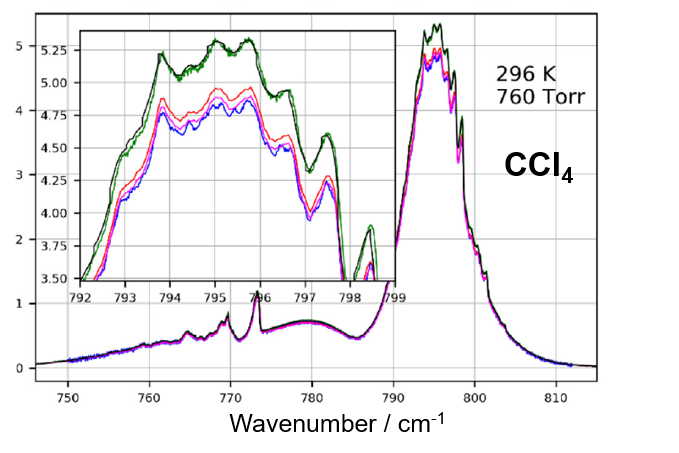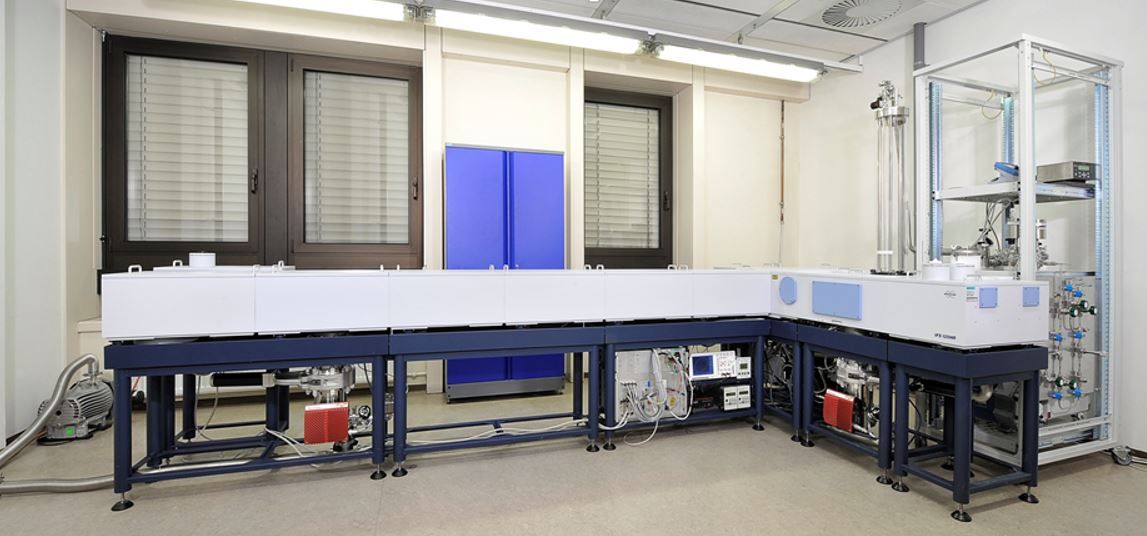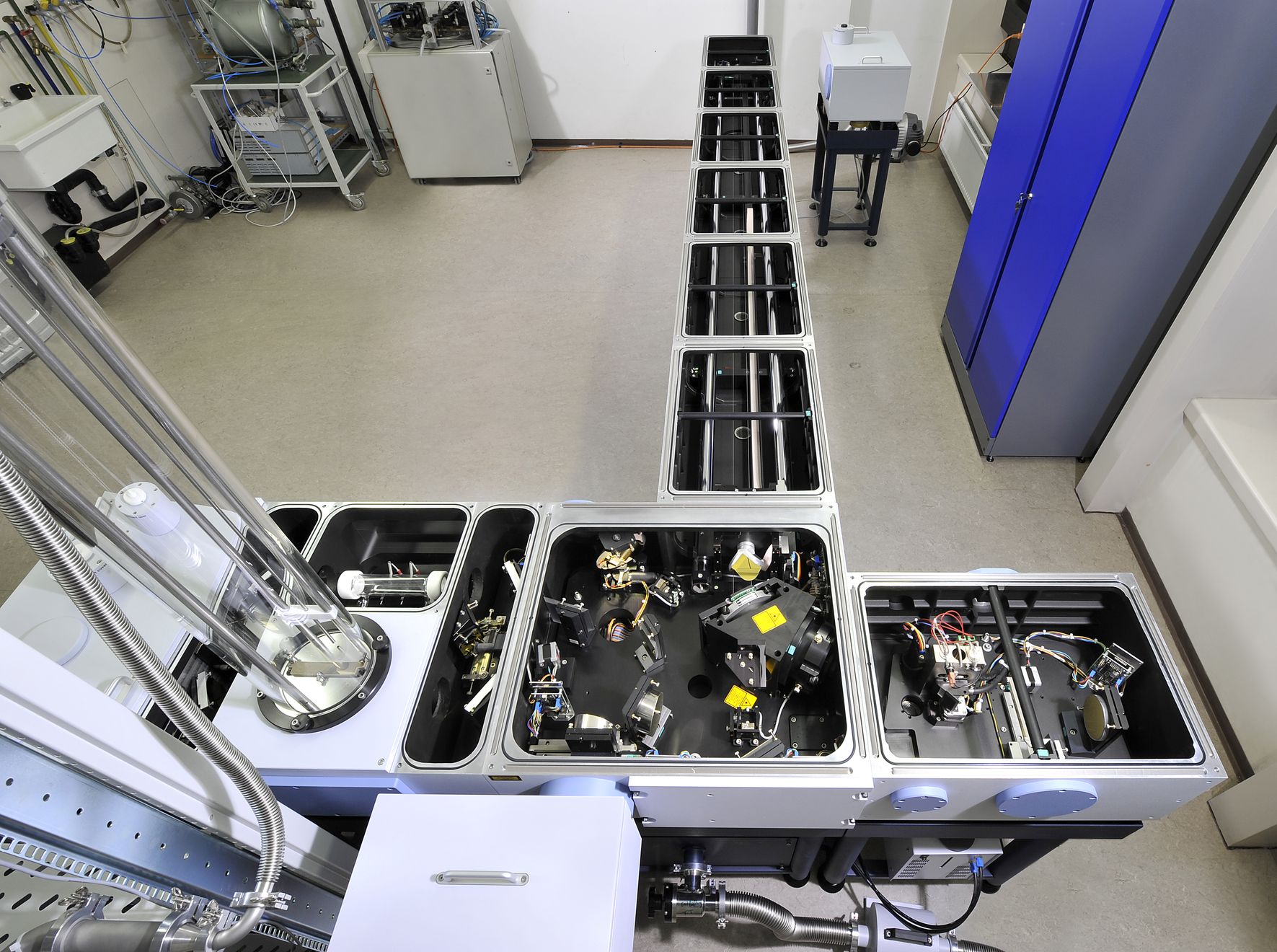Welcome to the blog of the project MetClimVOC!
October 2021
Monitoring halogenated VOCs from the space
In a previous post in January, we explained how the ground-based monitoring networks calibrate their instruments for monitoring atmospheric halogenated VOCs via primary reference gas mixtures. This calibration scheme is not applicable to satellite observations.
# How do infrared instruments on satellites measure atmospheric composition?
Basic working principle
As infrared (IR) radiation travels through the terrestrial atmosphere it interacts with numerous molecules along its path. These molecules can absorb IR radiation at certain characteristic frequencies; the absorption pattern of each molecule acts as a unique identifier or fingerprint.
Global monitoring of atmospheric composition, which is important for climate and atmospheric pollution studies, is possible using satellite remote sensing, which utilises quantitative molecular spectroscopy and the Beer-Lambert law to convert the strength of an absorption or emission feature in an atmospheric spectrum into atmospheric molecular abundances.
Two configurations are used in satellite observations. Nadir sounders such as IASI (the Infrared Atmospheric Sounding Interferometer) take atmospheric measurements while pointing at the Earth’s surface, while limb sounders such as ACE or MIPAS measure parallel to the earth surface through the atmosphere (Figure 1). ACE looks through the atmosphere directly into the Sun during sunrise and sunset events (known as solar occultation), and is able to detect more VOCs than any other satellite instrument. The measured atmospheric spectra contain fingerprint features of different molecules along the measurement path. By comparing the satellite spectra with simulated spectra derived from quantitative molecular spectroscopic databases, such as HITRAN or GEISA, one can derive the abundances of molecules along the measurement path.
As molecular absorption features in the infrared show a strong dependency on the pressure and temperature along the atmospheric path, the quantitative reference spectroscopy needs to cover this range of atmospheric conditions. Often these data are collected in spectroscopic databases like HITRAN. Typically two forms of spectral data can be found: a) line-by-line spectral parameters; b) absorption cross sections at different pressure and temperature combinations. The latter is often the only available choice for halogenated VOCs which are the main target in the MetClimVOC project.
Limited accuracy and demands for better absorption cross sections
Large uncertainties in the absorption cross sections of halogenated VOCs limit the absolute accuracy of the satellite retrievals. Furthermore there are currently no SI-traceable absorption cross sections for these species. An example is given in Figure 2 for CCl4, where the peak intensities differ by up to 10 % for recent studies.

# Traceable absorption cross sections in the laboratory
Historically, the absorption cross sections of halogenated VOCs included in the HITRAN database have been measured by Fourier-transform infrared (FTIR) spectrometers (one such instrument is shown in Figure 3). Fourier transform spectroscopy is an ultra-broadband technique that allows simultaneous measurements of highly resolved molecular spectra for all absorbing molecules from the ultraviolet to the far-infrared.
Determination of the absorption cross section at a given temperature and pressure requires two measurements from which an overall spectrum is calculated, one with an empty sample cell and the other with the cell filled with pure or air-broadened sample gas under very accurately controlled pressure, temperature, path length and chemical composition conditions. Dividing the two measurements removes instrumental effects caused by the different optical elements used to guide and modify the IR beams.


The combined pathlength, pressure, and temperature uncertainties contribute about one-sixth to a quarter of the total uncertainty. Other uncertainty contributors include baseline drifts and photo detector non-linearity (Figure 4).
PTB and UoL have devised a series of steps to improve the absorption cross sections of halogenated VOCs (uncertainty < 1 % (k = 2)) to meet the WMO and community need for accuracy:
- making SI-traceable measurements to validate the database;
- improving pressure, path length and temperature uncertainties;
- collaborating with other groups to introduce better non-linearity corrections;
- and adopting better reference gas mixtures for "zero air" and the target VOCs.

Within the MetClimVOC project, we intend to determine spectral data for halogenated species such as CFC-12, HFC-23, CF4, and others with improved quality and metrological traceability. This will be the first time that metrological traceability has been achieved for the absorption cross sections of these species. The spectral data will be made available via the MetClimVOC webpage, the Zenodo community of the project, the partners webpages and will be submitted to the traditional spectroscopic databases like HITRAN and GEISA.
# About the authors

Gang Li is a scientist at PTB. His main expertise is spectroscopic line parameters for atmospheric molecules. He previously worked at the HITRAN group at Harvard-Smithsonian Center for Astrophysics.

Jeremy Harrison is the spectroscopy lead at the National Centre for Earth Observation (NCEO) in the UK. His expertise is in laboratory molecular spectroscopy and the remote sensing of trace gases in the atmosphere, with a particular emphasis on halogenated VOCs.

Volker Ebert is head of the department for Analytical Chemistry of the Gas Phase at PTB, and currently leads e.g. the work group Spectrometric Gas Analysis . His main expertise is laser and FTIR based gas phase spectroscopy for industrial and environmental applications. He is member of the CCQM-GAWG, Euramet TC-MC SCGA,EMN-COO and the JNP for pollution monitoring, and initiator of the EUMETRISPEC initiative. For more details follow this Link

Mi Eon Kim is a scientist at PTB. Her main expertise is gas metrology and analytical chemistry. She previously worked at the Korean national metrology institute, KRISS, on dimethyl sulfide primary reference gas mixtures using gravimetric and dynamic mixing methods.
# Latest post
Go back to the latest blog post.
# Other posts
In this section, you can find the links to other blog posts.
February 2022 - Reference gas mixtures for oxy-VOCs
December 2021 - Terpenes in the atmosphere
June 2021 - One year of project MetClimVOC!
March 2021 - How gas surface interactions can affect VOC monitoring?
January 2021 - Halogenated VOCs in the atmosphere: monitoring and traceability
November 2020 - Atmospheric trace gases: VOCs, impact climate change
September 2020 - Welcome to the blog of the project MetClimVOC!